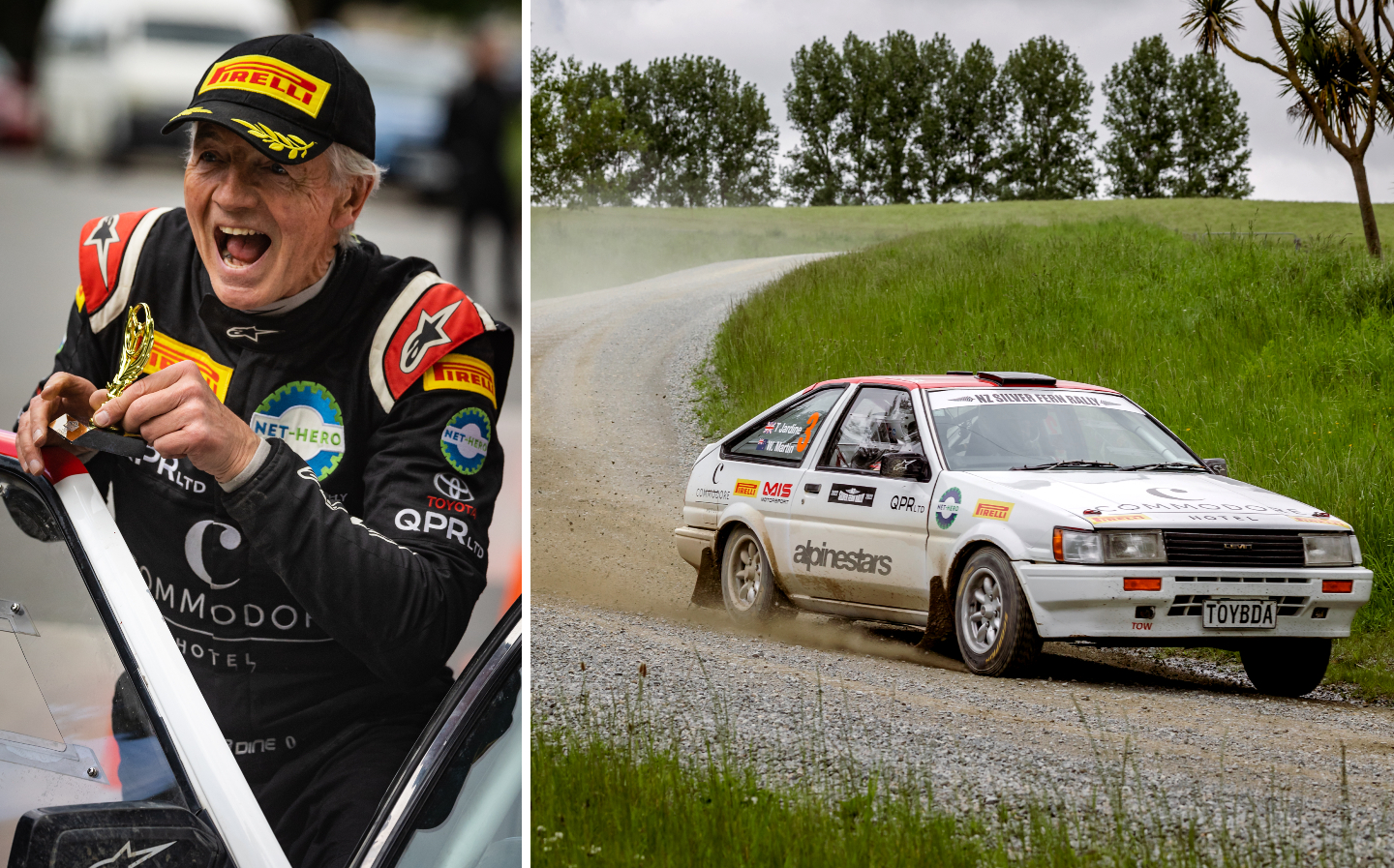Tony Jardine: Why New Zealand's Silver Fern Rally is the envy of the world
Remote and beautiful New Zealand is a driving force
For a small nation of just five million people across two islands in the South Pacific, New Zealand has produced some of the finest sports achievers in the world. A lot like Scotland, it punches way above its weight in the winning stakes with teams at the sharp end of world cricket, rugby, sailing and basketball.
For motorsport fans, the biggest name that springs to mind is Bruce McLaren, a driving force in more ways than one who spawned the F1 team that has claimed eight constructors’ championships and helped its drivers to 12 titles.
New Zealand also produced Ferrari driver and Le Mans winner Chris Amon, and Denny Hulme who became F1 world champion in 1967 beating the likes of Jack Brabham, Jim Clark, John Surtees and Graham Hill (and many more heroes besides).
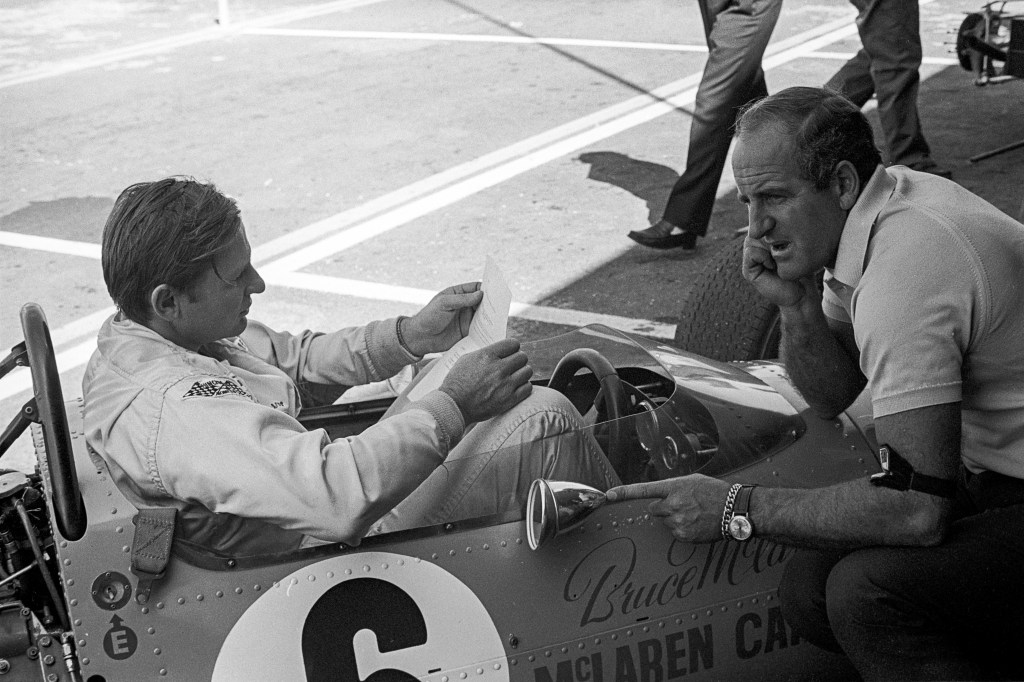
Latterly the Kiwis have tasted success in Le Mans with Brendon Hartley and now have the young Liam Lawson about to break into F1, having impressed in F1 practice sessions throughout 2022.
The remoteness and ruggedness of New Zealand is part of its success; the great outdoors is everywhere. It breeds determination, too: their sports stars have developed into international stars by taking themselves to the other side of the world to compete and improve with the best. I was privileged to work with many a talented Kiwi at McLaren, and one had to admire their commitment to make their careers such a long way from home.
Even if they weren’t professional drivers, their driving skills were developed on the smooth fast gravel roads behind the wheel of their own ‘specials’, or competition cars developed from road-going machines.
In the early days, auto tests and regularity events formed part of New Zealand’s motor sport scene consisting of car trials and hill climbs. Once the Tasman Series arrived in the 1960s, allowing adapted F1 cars (and their star drivers) to compete in Australia and New Zealand during their off seasons, New Zealand motor sport enthusiasts became hooked.
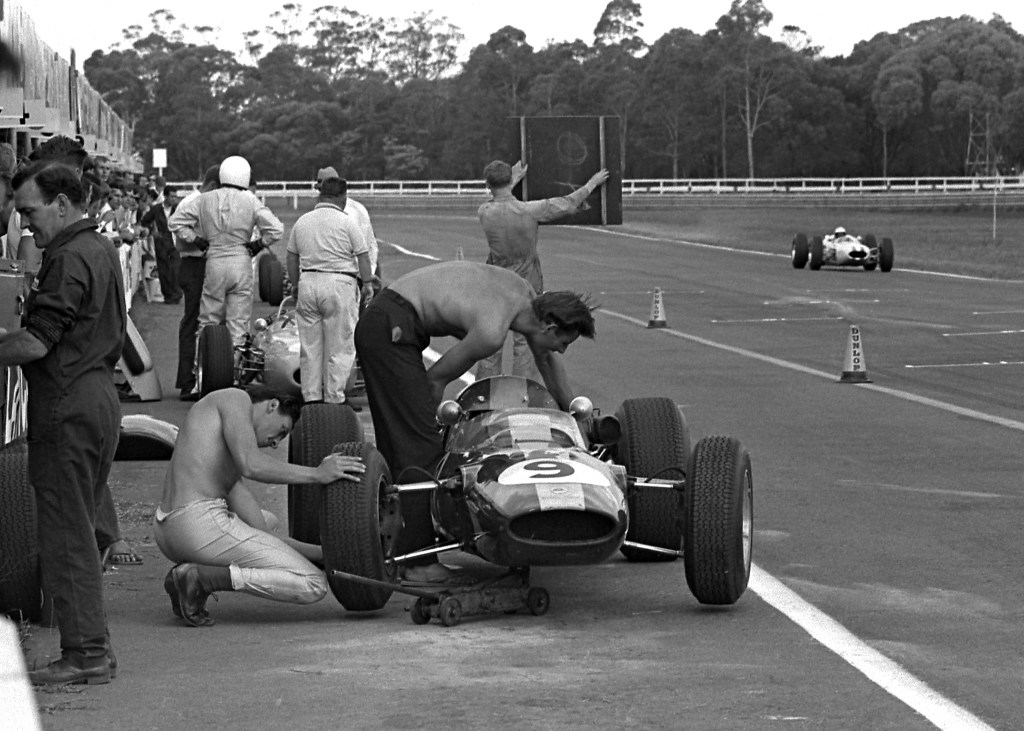
They were inspired by Jackie Stewart, Jim Clark and Graham Hill in grand prix machines cars competing at exotically named tracks such as Pukekohe and Teretonga.
In a similar way the late sixties’ boom in special stage rallying spread to New Zealand, where the environment was almost purpose-built for the task. Highly tuned saloon and sports cars were driven as fast as they would go over a series of forest, mountain and dirt track special stages, with a navigator informing the driver of every treacherous turn, dip, ditch and gate ahead.
Early events, such as the 1966 Rally of the Pines and Midnight Madness Rally, using the back roads between Port Waikato and Huntly, turned New Zealand rallying into what we know now. Blair Robson won in a Mini.
In 1967 the forest roads north of Taupo became the speed grounds for 41 entrants in the second ever Pines Rally which was won by Bill Purvis in a Ford engined Morris Minor. The word spread about these new tests for man and machine and rallies went further and faster on closed roads.
The first ever Silver Fern Rally was postponed due to lack of entries but came back strongly with proper promotion in 1969 and the backing of Shell. It ran from Taupo with stages up to 30 miles in length taking crews all the way to Auckland.
The 1970 Silver Fern Rally was run on the South Island organised by the Canterbury Car Club with over 32 special stages totalling 460 miles. The quickest car was a specially-built 1600cc Ford Anglia though it came off the road too often and finished down the field, with Paul Adams and Don Fenwick taking honours in Adam’s mother’s BMW 2002 Ti. Regional TV and radio covered the event closely.
Rallying in New Zealand developed into regular World Championship rounds highlighted by a young Colin McRae scoring his debut World Championship win in a Subaru on the North Island in 1993. McRae blitzed the opposition on the daunting Motu Road stage, which carves its way through frightening gorges and gravel-covered dense tropical forest tracks before climbing an icy mountain road.
The World Rally Championship highlighted the brilliant driving roads of New Zealand, which have been used since for “Ultimate” events such as the Silver Fern and Otago rallies. They attract competitors from around the world, drawn by the incredible topography and remote driving roads, often with the backdrop of snow-capped mountains, especially on the beautiful South Island.
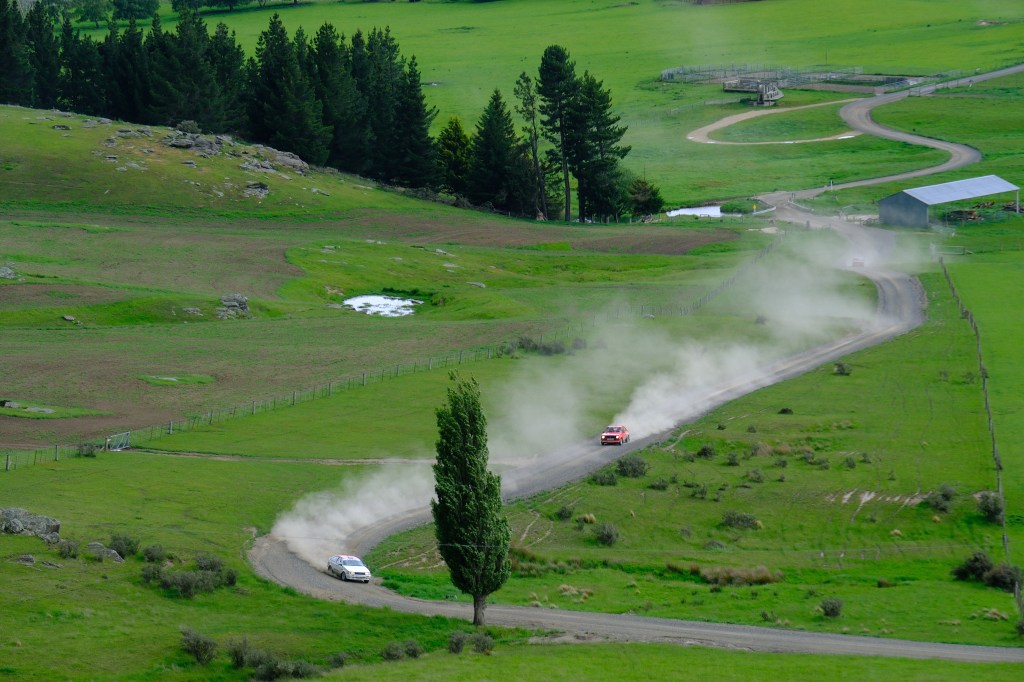
The roads have history, explained Peter Martin, boss of the Ultimate Rally Group that organises the Silver Fern Rally:
“These roads are world class. Many countries say they have the best roads but here in New Zealand we are lucky to have colonial history with roads that were formed by horse and dray (flat carts), as the pioneers took their paths across the hills and mountains.
“Ultimately these paths have been turned into gravel roads. Some have been capped with tarmac but a high proportion are still gravel.
“The undulations that follow the contours of the land is how these roads were formed; they weren’t just bulldozed through like a highway in Europe. We are lucky that we have these fabulous driving roads that, with the consent of many local authorities, we can close for the Silver Fern Rally when it comes round every two years.”
For me, ten years of fermentation, then two more getting closer to the burning ambition of driving in New Zealand on the greatest rally stages in the world, finally became reality as I hit the smooth fast gravel roads of the Silver Fern Rally in November.
Videos and pictures of stars including Meirion Evans and Stig Blomqvist blasting flat out in their Escorts against the magnificent New Zealand backdrop truly inspired me. Working for HERO-ERA on the New Zealand Classic Rally in 2020, traversing both islands, cemented my determination — contacts were made while I was there. Funds were slowly gathered. I was on my way to the marathon historic rally.
Following a dramatic build up of three car changes in five hours, we finally made it to the start line at Riccarton Race Course in Christchurch, deciding to run carbon neutral and offset the emissions using NET-HERO’s three-star rated system as the car ran through the beautiful South Island.
In prospect, more than 1,800 miles of driving, 560 of which were competitive over 45 special stages. Experienced Silver Fern Rally co-driver Alun Cook said of the seven days ahead: “This is what we signed up for: effectively two seasons’ worth of typical UK rallying in one week. You wouldn’t get that anywhere else in the world.”
He was particularly looking forward to leg five, which involved a 44-mile special stage.
I started historic rallying after many seasons circuit racing between my work commitments in sports promotion, events and broadcasting. I have rallied in the Arctic, Norway, Monte Carlo and the Middle East. I have competed as an enthusiastic amateur in 26 RAC and Wales Rally GBs at WRC level.
My best result was 2013, with Amy Williams MBE as my co-driver when we finished 26th overall and first in the production car category, winning the class by three seconds over a final dramatic stage around the Great Orme. Amy was our first Winter Olympics gold medallist for 40 years when she won the Skeleton Bobsleigh event in Canada in 2010. Her competitive spirit spurred me on; the discipline and determination required to win at the highest level was inspiring.
That was in a modern turbocharged Mitsubishi Evo 9, but my ride for the Silver Fern Rally was something completely different. Rather than ship a car out from the UK I decided to hire one in New Zealand, run by local preparation specialist Bryce Biggs and with a New Zealand co-driver, Warwick Martin. Our Anglo-Kiwi team would be fielding a 1985 1,587cc Toyota Corolla.
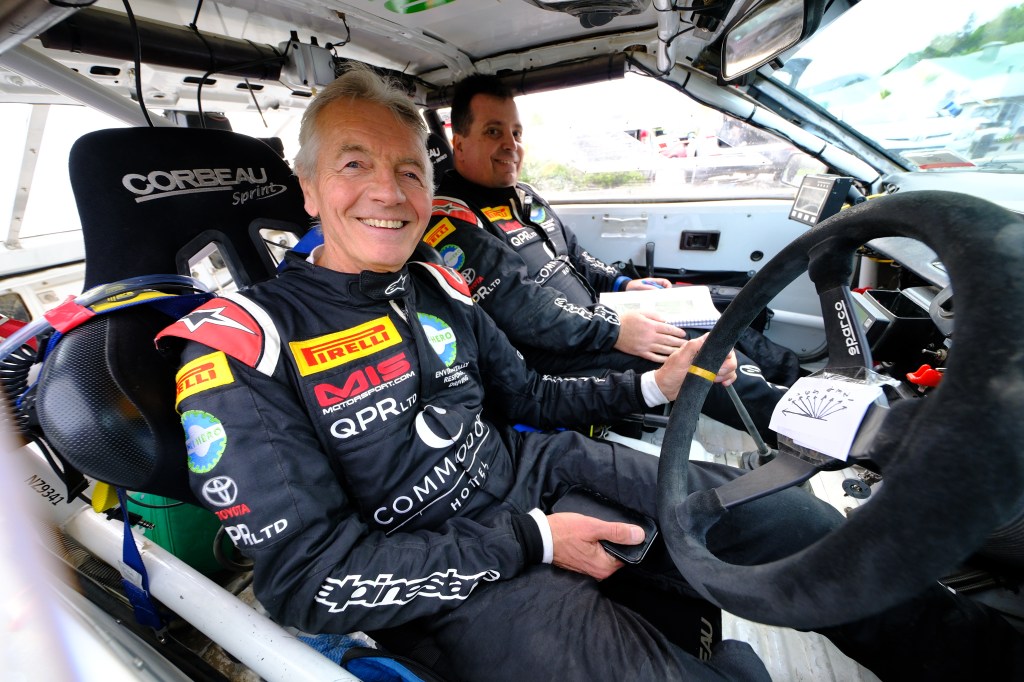
We’d be competing in a team alongside Frank Tundo, a former Kenyan farmer and rally veteran, who had 2022 National Historic Rally champion Donna Elder as his navigator. Tundo was even more enthusiastic than me about the prospect of these incredible roads.
“I have competed in the Silver Fern Rally once before,” he told me. “Then it was on the North Island, but I just had to come back — this is the most amazing rally on Earth. These roads are made for rallying; honestly they are incredible.”
Over the 1,800 miles we encountered stages such as the daunting Dansey’s Pass, 17 miles across rock-strewn mountain roads and river crossings, and the day three car basher of Paerau, on the Old Dunstan Road that is virtually as it was 160 years ago when used as the wagon trail for pioneers searching for gold.
In fact some of the rutted tracks were more suitable for old wagons than cars, reminiscent of the East African Safari with their washed out river beds and muddy tracks.
Naseby was the antidote where the settlers built a lovely small colonial town. That was the place to settle and fettle the rally cars, a welcome service point to fix our battered machines.
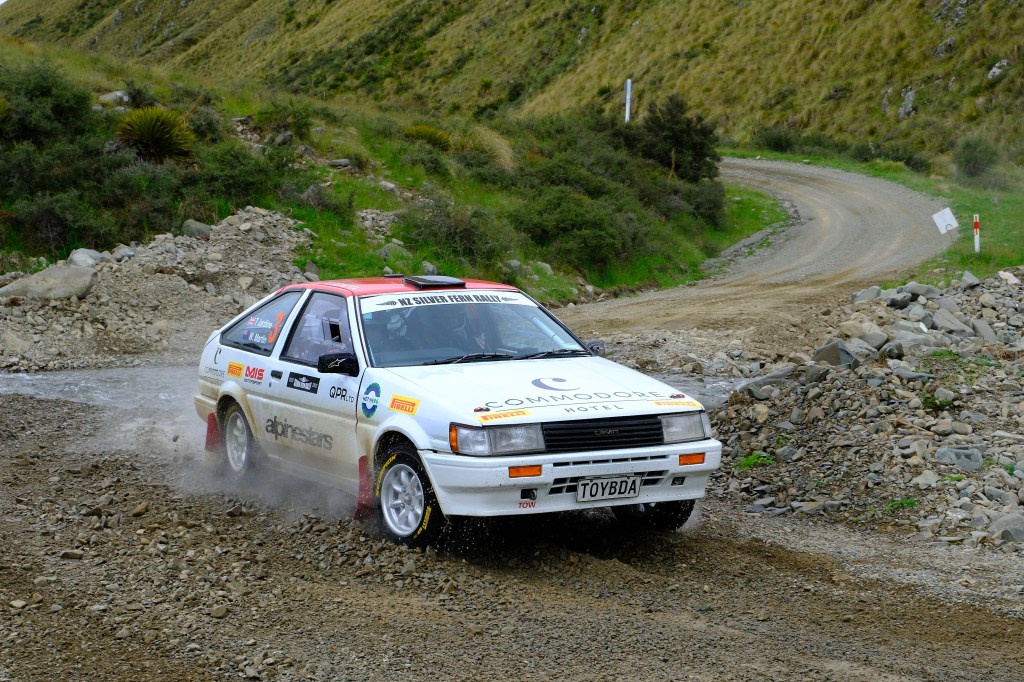
During the pause in action, Porsche 911 driver Allan Dippie made it clear that Dansey’s Pass is not for the faint-hearted. It was on that stage during another rally, he said, that his classic Toyota Corolla came off the road while he was chasing a rival car. It slid off the edge of the mountain, destroying itself against the rocks on its flight down the side of one of New Zealand’s highest passes. Unbelievably, the crew members were OK and the car, though a pile of junk in the immediate aftermath, was eventually rebuilt.
Pushing that to the back of my mind, we held our nerve over the high mountain passes and long, smooth gravel roads, flat-out in fifth gear with endless blind crests and sustained high speed.
The leg five Cannibal Bay Road and Hunt Road were glorious twisty forest stages with a slimy top surface due to the rain; as good as anything you would find in a Welsh forest. Our amazing journey took us from Christchurch to Fairlie, Oamaru, Dunedin, Invercargill, Owaka, Timaru and seven days later back to Christchurch for the finish.
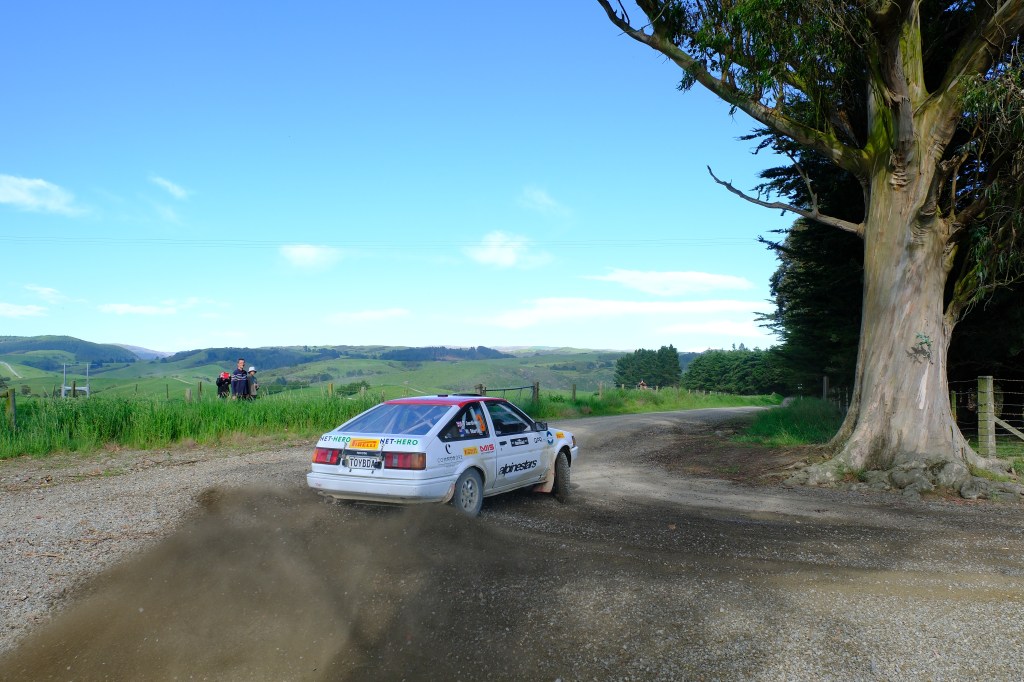
To our delight we were 10th overall and first in the 1600cc class, but it had not been without its challenges.
We had broken exhaust manifolds and kept welding until a new system was fitted at the Dunedin halt to keep us in contention.
And with two special stages remaining in leg five, the twin cam Corolla dramatically slewed sideways to a halt, jammed in gear after parts of a failed bearing dropped into the transmission. This had savaged the flywheel on the appropriately-named Cannibal Bay Road stage.
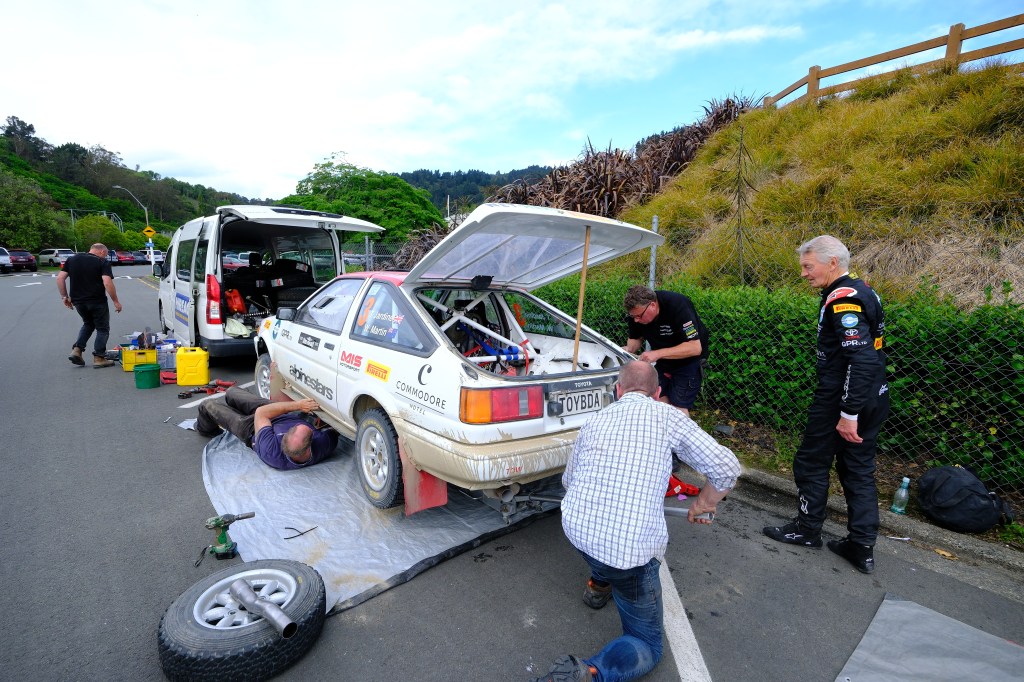
As a result, four stages were missed and penalties taken but a new gearbox was found in Invercargill, 300 miles away in the deep south. By 9.30 the next morning it was fitted and the team raced to re-join.
That wasn’t the end of our tribulations. Leaving service on the final day, the panhard rod (a component in the rear suspension/axle assembly) snapped. There were more anxious moments as the team lashed a makeshift strap across the axle and we were sent wobbling on our way while they team hunted for another welder.
It was touch and go at times whether we would be able to make the finish and there is no doubt I felt anxious. It’s thanks to the diligence and resourcefulness of Bryce Biggs and his crew that we made it to the end; they found fixes where I thought none were possible.
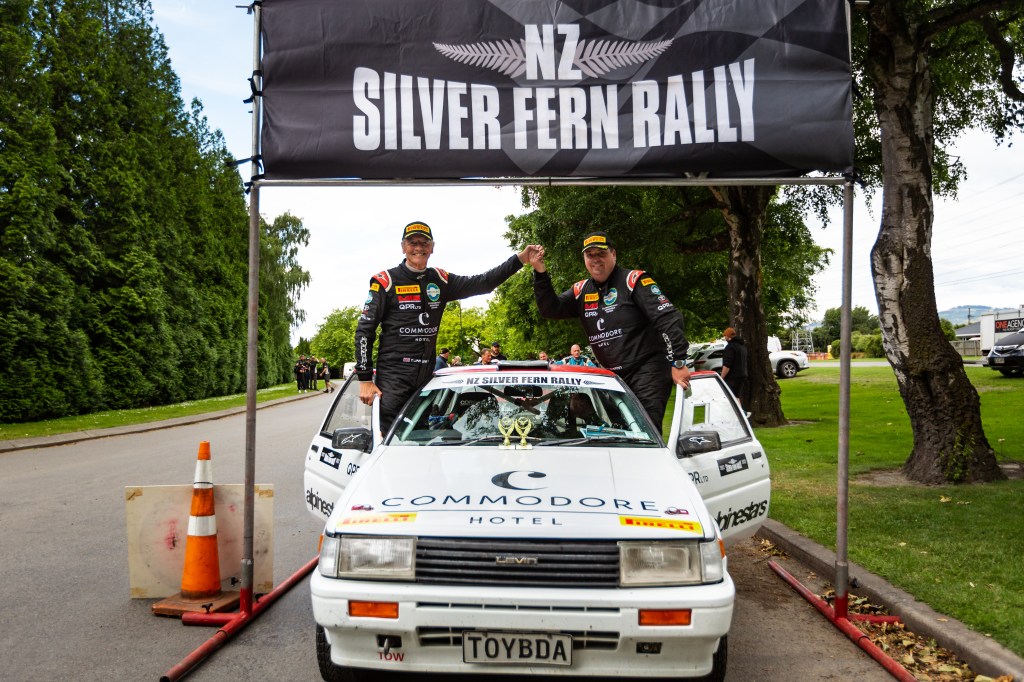
I had long held the ambition of driving in the Silver Fern Rally and finally, despite the heart-stopping moments of broken manifolds and gearboxes, my dream of finishing the event came true – and in the top ten.
The Silver Fern Rally 2024 will be in the glorious South Island again. I am already planning to beg, borrow or steal to get there. It is a ‘must do’ rally. Remote and beautiful New Zealand knows not only how to make great drivers and engineers but also truly wonderful motorsport events.
About Tony Jardine
Tony Jardine has spent his life working and competing in motor sport and the media. He was a teacher, truck driver and one time political cartoonist, who worked his way up the F1 ladder from Goodyear tyre fitter to be assistant team manager at McLaren, following terms with Brabham then Lotus. He served on the British Racing Drivers’ Club board, fighting Bernie Ecclestone to save the British Grand Prix.
Jardine enjoyed a parallel media career as PR agency chief and broadcaster with Sky, BBC, ITV, BeIn Sports (MEA) and talkSPORT. He is currently the Communications Director for HERO-ERA, one of the world’s foremost historic rally events company which runs the likes of the Peking Paris Motor Challenge.
He loves motoring and motor sport and still regularly competes on track and special stage. He is a previous winner of the Goodwood Revival St Mary’s race and finished second in the Spa 2 hours in a Chevrolet Camaro.
Related articles
- After reading Tony Jardine’s report on New Zealand’s Silver Fern Rally for classic cars, check out Porsche’s rally-inspired all-terrain 911 Dakar with suspension lift and racing livery option
- FIA World Rallycross series goes electric and the cars are ‘next level’ fast, say drivers
- Earlier this year, legendary rally driver Paddy Hopkirk died aged 89
Latest articles
- Audi S5 2024 review: Audi smells blood in battle with BMW
- F1 2024 calendar and race reports: What time the next grand prix starts and what happened in the previous rounds
- AA calls for graduated licensing scheme to prevent deaths of young, inexperienced drivers
- Porsche Macan 2024 review: Entry-level electric SUV is a marathon runner, not a sprinter, but that doesn’t affect its all-star athletic appeal
- How your 10-year-old can get behind the wheel of a Mercedes, Porsche or Bentley … and why you should do it
- Lotus Eletre 2024 review: Is the electric Lotus SUV an abomination or a class act?
- Prices for hot Nissan Ariya Nismo announced … red sill strip light included
- Return of the Renault 4: Full details and images from Paris motor show unveiling
- Elon Musk unveils ‘Cybercab’ robotaxi for claimed 2026 rollout and offers guests first rides … in controlled environment


